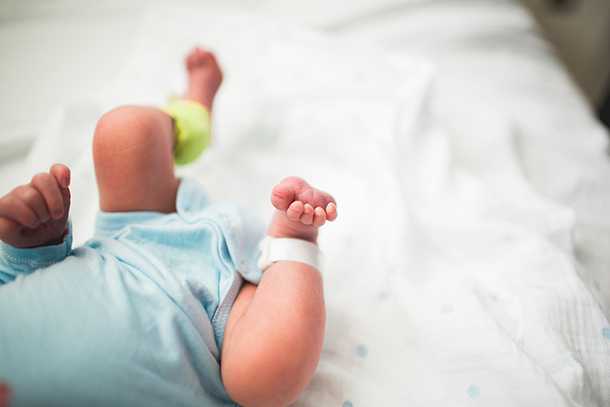Cerebral palsy is a lifelong disorder of movement caused by a disturbance to the developing fetal or infant brain. It is the most common physical disability in childhood, affecting more than 17 million people worldwide. Approximately 70 percent of children with cerebral palsy will walk, but they tend to learn later and often adopt a gait that can cause lifelong problems.
Assistant professor of clinical physical therapy Barbara Sargent, PhD, is leading a new study to find out if a particular type of movement — decreased selective leg control — can be used to diagnose cerebral palsy in very early infancy. Sargent has recently received two separate grants to study cerebral palsy in infants. One is from the Academy of Pediatric Physical Therapy and the other is from the Foundation for Physical Therapy Research.
Baby steps and kicks
In the study, Sargent and her team will follow 15 typically developing infants and 23 infants whose brain scans put them in a high-risk category for cerebral palsy.
Each month until the infants turn 9 months old, she will test their leg joint control. Using a system that analyzes motions, Sargent will monitor how the babies do three things: kick spontaneously, reach for a toy with their feet and take steps when held over a treadmill.
During the first 6 months of their lives, typically developing infants learn to bend their hip, knee and ankle independently of each other, movement known as selective leg joint control
Infants with cerebral palsy, however, don’t gain that ability, likely due to damaged brain motor circuits.
By identifying this inability to bend hip, knee and ankle independently of each other, Sargent hopes that she can detect and diagnose cerebral palsy earlier than ever before, giving physical therapists a leg up in changing the disease’s effects on gait.
Early diagnosis is key
Animal studies show that active early intervention can help rebuild damaged brain circuits — especially if therapy starts before an infant turns 1. If the diagnosis comes later, infants may be missing out on a window where they can most benefit from physical therapy.
Oftentimes, children are not diagnosed until they are late to crawl or walk. Around 75 percent of kids with cerebral palsy are diagnosed at age 1. The other quarter aren’t diagnosed until age 2, Sargent said.
“That’s why it would be nice to identify children early — perhaps before they miss physical milestones — and provide interventions so they meet milestones as close to normal as possible,” Sargent said, adding that specific therapies can help kids with cerebral palsy. The study seeks to understand the amount of selective control in the babies, but also see if that selective control improves with interventions.
“We know that infants at high risk for cerebral palsy demonstrate decreased selective leg control in very early infancy,” Sargent explained, adding that some research shows differences in the movements of kids with cerebral palsy as young as 1 month old. “But this movement has never been used for diagnosis.”
— Katharine Gammon


